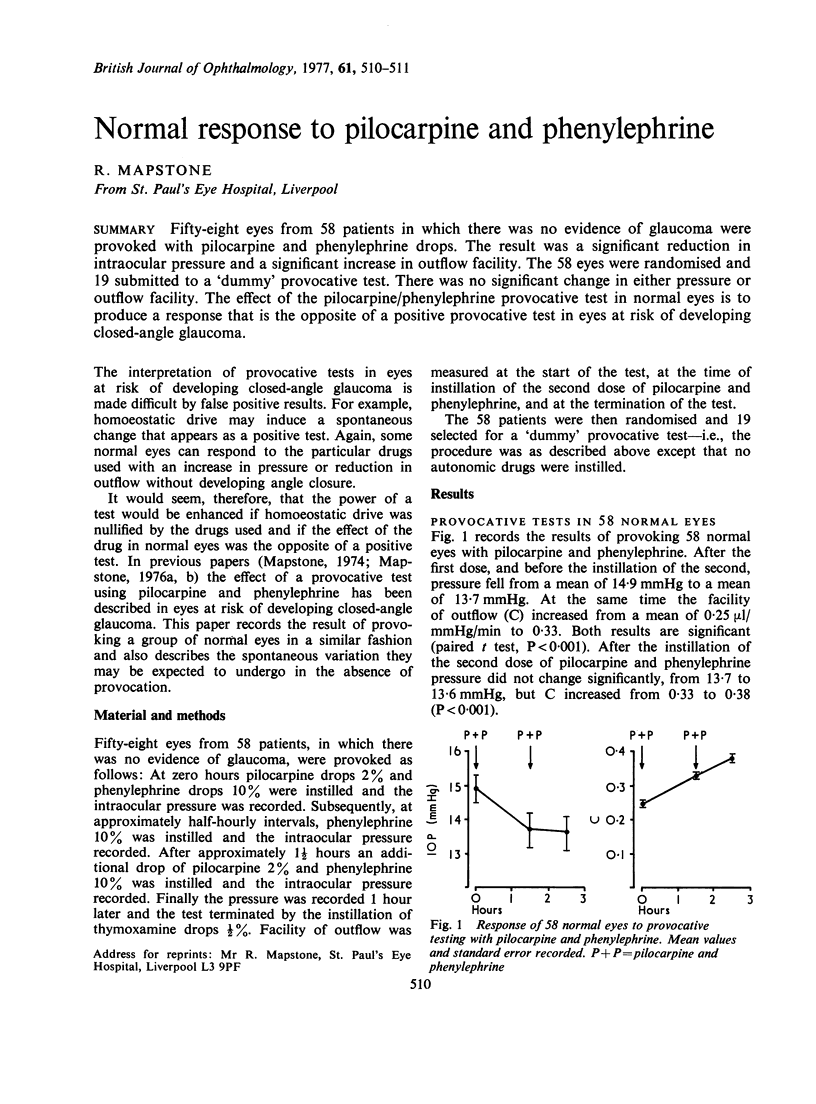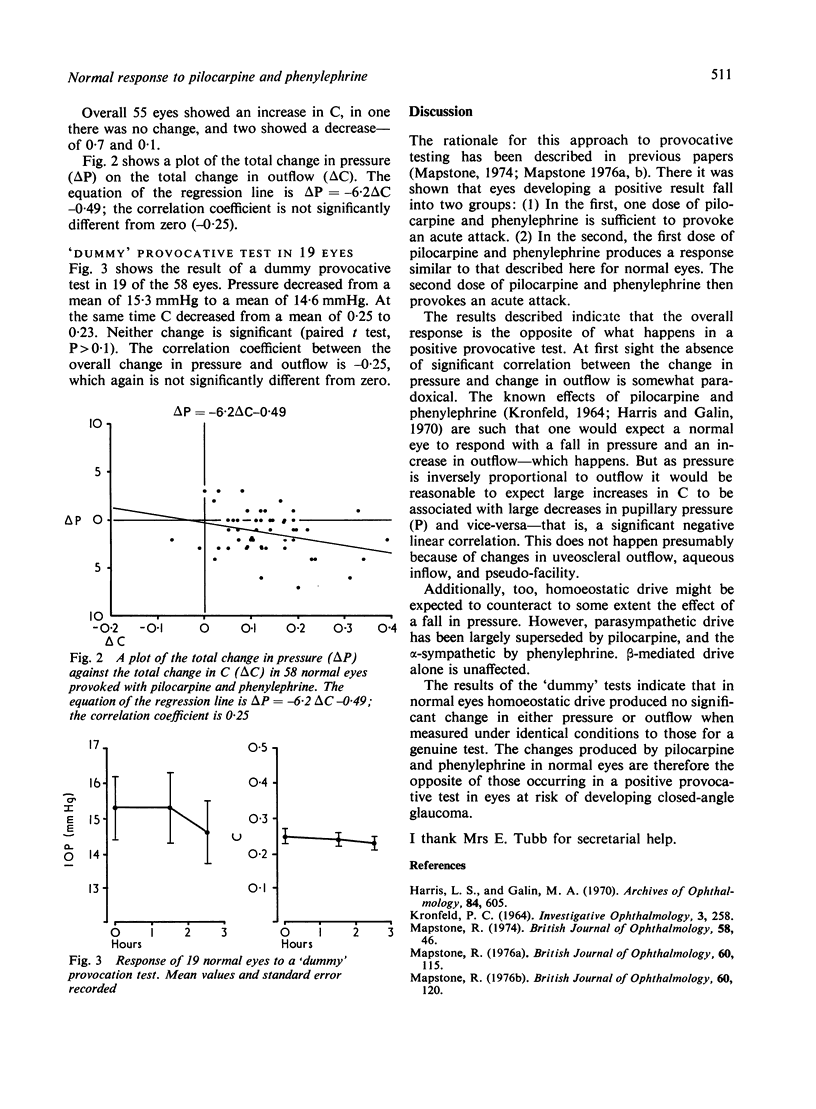Abstract
Fifty-eight eyes from 58 patients in which there was no evidence of glaucoma were provoked with pilocarpine and phenylephrine drops. The result was a significant reduction in intraocular pressure and a significant increase in outflow facility. The 58 eyes were randomised and 19 submitted to a 'dummy' provocative test. There was no significant change in either pressure or outflow facility. The effect of the pilocarpine/phenylephrine provocative test in normal eyes is to produce a response that is the opposite of a positive provocative test in eyes at risk of developing closed-angle glaucoma.
Full text
PDF

Selected References
These references are in PubMed. This may not be the complete list of references from this article.
- Harris L. S., Galin M. A. Dose response analysis of pilocarpine-induced ocular hypotension. Arch Ophthalmol. 1970 Nov;84(5):605–608. doi: 10.1001/archopht.1970.00990040607008. [DOI] [PubMed] [Google Scholar]
- KRONFELD P. C. DOSE-EFFECT RELATIONSHIPS AS AN AID IN THE EVALUATION OF OCULAR HYPOTENSIVE DRUGS. Invest Ophthalmol. 1964 Jun;3:258–265. [PubMed] [Google Scholar]
- Mapstone R. Precipitation of angle closure. Br J Ophthalmol. 1974 Jan;58(1):46–54. doi: 10.1136/bjo.58.1.46. [DOI] [PMC free article] [PubMed] [Google Scholar]
- Mapstone R. Provocative tests in closed-angle glaucoma. Br J Ophthalmol. 1976 Feb;60(2):115–119. doi: 10.1136/bjo.60.2.115. [DOI] [PMC free article] [PubMed] [Google Scholar]
- Mapstone R. The syndrome of closed-angle glaucoma. Br J Ophthalmol. 1976 Feb;60(2):120–123. doi: 10.1136/bjo.60.2.120. [DOI] [PMC free article] [PubMed] [Google Scholar]


